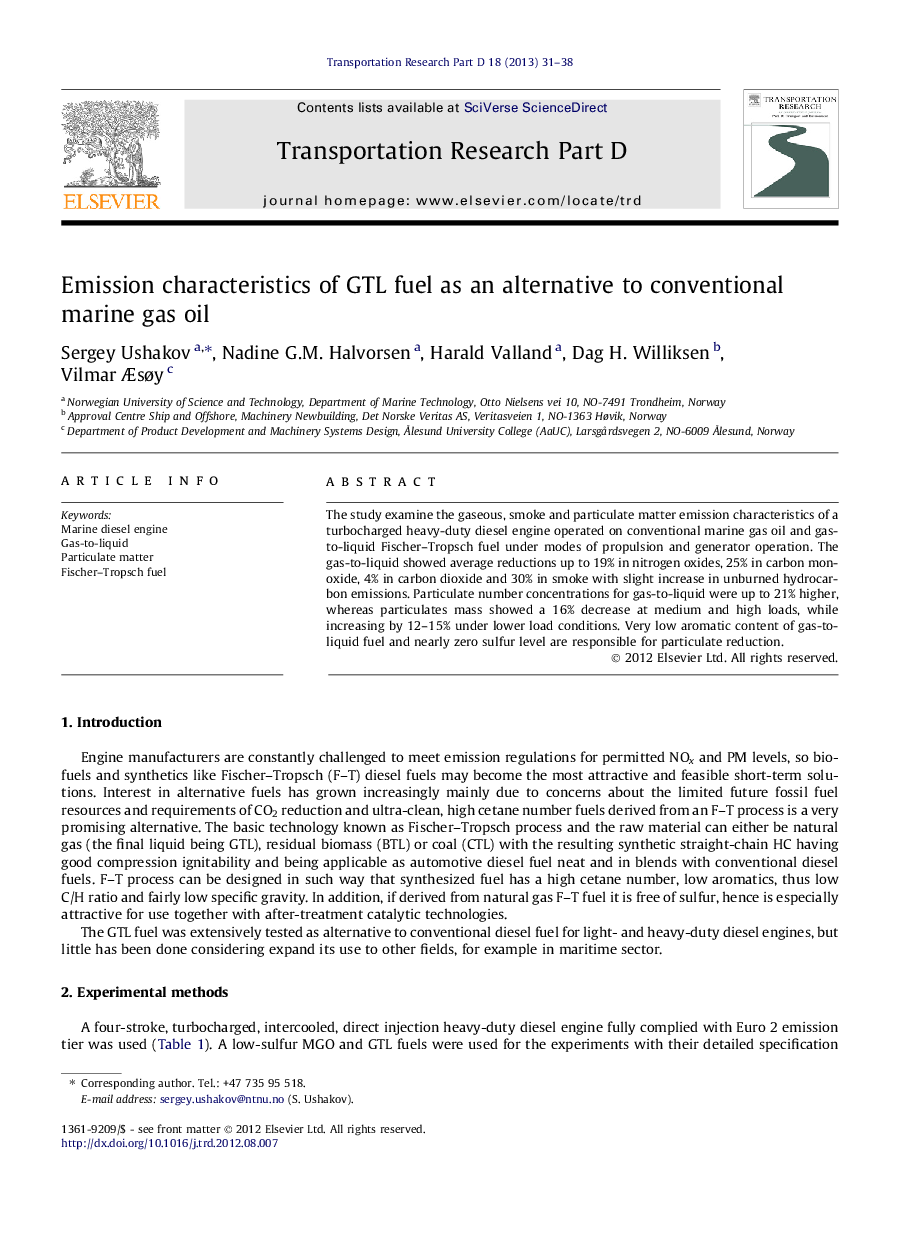| Article ID | Journal | Published Year | Pages | File Type |
|---|---|---|---|---|
| 1065888 | Transportation Research Part D: Transport and Environment | 2013 | 8 Pages |
The study examine the gaseous, smoke and particulate matter emission characteristics of a turbocharged heavy-duty diesel engine operated on conventional marine gas oil and gas-to-liquid Fischer–Tropsch fuel under modes of propulsion and generator operation. The gas-to-liquid showed average reductions up to 19% in nitrogen oxides, 25% in carbon monoxide, 4% in carbon dioxide and 30% in smoke with slight increase in unburned hydrocarbon emissions. Particulate number concentrations for gas-to-liquid were up to 21% higher, whereas particulates mass showed a 16% decrease at medium and high loads, while increasing by 12–15% under lower load conditions. Very low aromatic content of gas-to-liquid fuel and nearly zero sulfur level are responsible for particulate reduction.
► Gas-to-liquid fuels reduce NOx, CO, CO2 and smoke emissions, while unburned hydrocarbon concentration increases. ► Increase in PM mass and number concentration is likely caused by GTL fuel impingement on cylinder walls. ► Injection system tuning/modification may help in gaseous and particulate emissions from GTL fuels.
